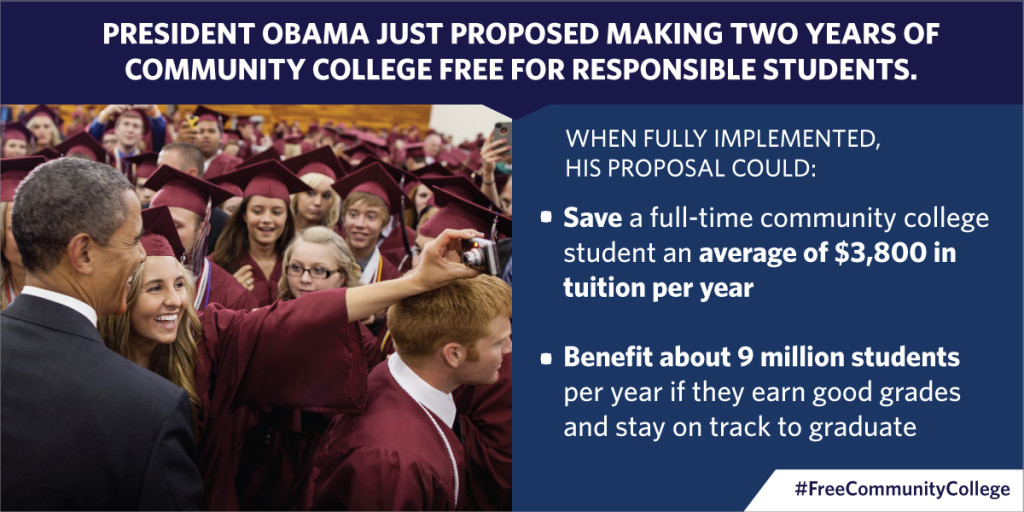A Few Thoughts on President Obama’s Community College Plan

Last week President Obama announced that he wanted to make the nation’s community college system free of charge to students. Under his not-so-detailed-yet plan, $60 billion will be spent over the next 10 years to make this possible. I already have a bachelor’s degree, but I went back to school at my local community college recently to get certification in web development and programming.
Going back to school after being out for so many years can be daunting, but I had a great experience. There are many things to like about community colleges; they are inexpensive, you don’t feel like the oldest person in the classroom and there is a lot of academic support. Many of the teachers at community colleges do everything to help you succeed.
While I think the president’s plan so far is ambitious and promising, I also have a lot of questions that I hope he will address during his State of the Union next week.
Class issues? – Nine million students will save money from this proposed plan; however, middle class students will most likely benefit, since low income students already have their tuition covered by the Pell Grant. Maybe the money should be given to low income students who matriculate to a 4-year public college or university if tuition exceeds the Pell Grant and maintain a certain GPA. Speaking of which…
Higher GPA, More $$$? – Obama’s plan proposes that community college students can retain free tuition if they have a 2.5 GPA, or a ‘B’ average. I think money should be given on a progressive scale. If you have a 4.0 GPA, you get full free tuition. A 2.5 GPA would be half or three quarters payment for tuition. I think incentives systems force students to achieve more by thinking about the value of their education.
First time, and second time around? – Most scholarships and grants, including the Pell Grant, are geared towards first time college students fresh out of high school. There are a growing number of people who may already have bachelor’s or master’s degrees, but due to the changing economy or layoffs, have to go back to school and retrain in a new field. There should be money for those who have been affected by the recession to help them get back on their feet.
Support high demand careers – It seems like Obama’s proposal supports students majoring in all subjects. However, the country is lacking in graduating students who are pursuing in-demand careers in STEM and this is becoming more obvious everyday in the global economy. Priority should be given to students majoring in fields that are actually in-demand and hiring right now.


